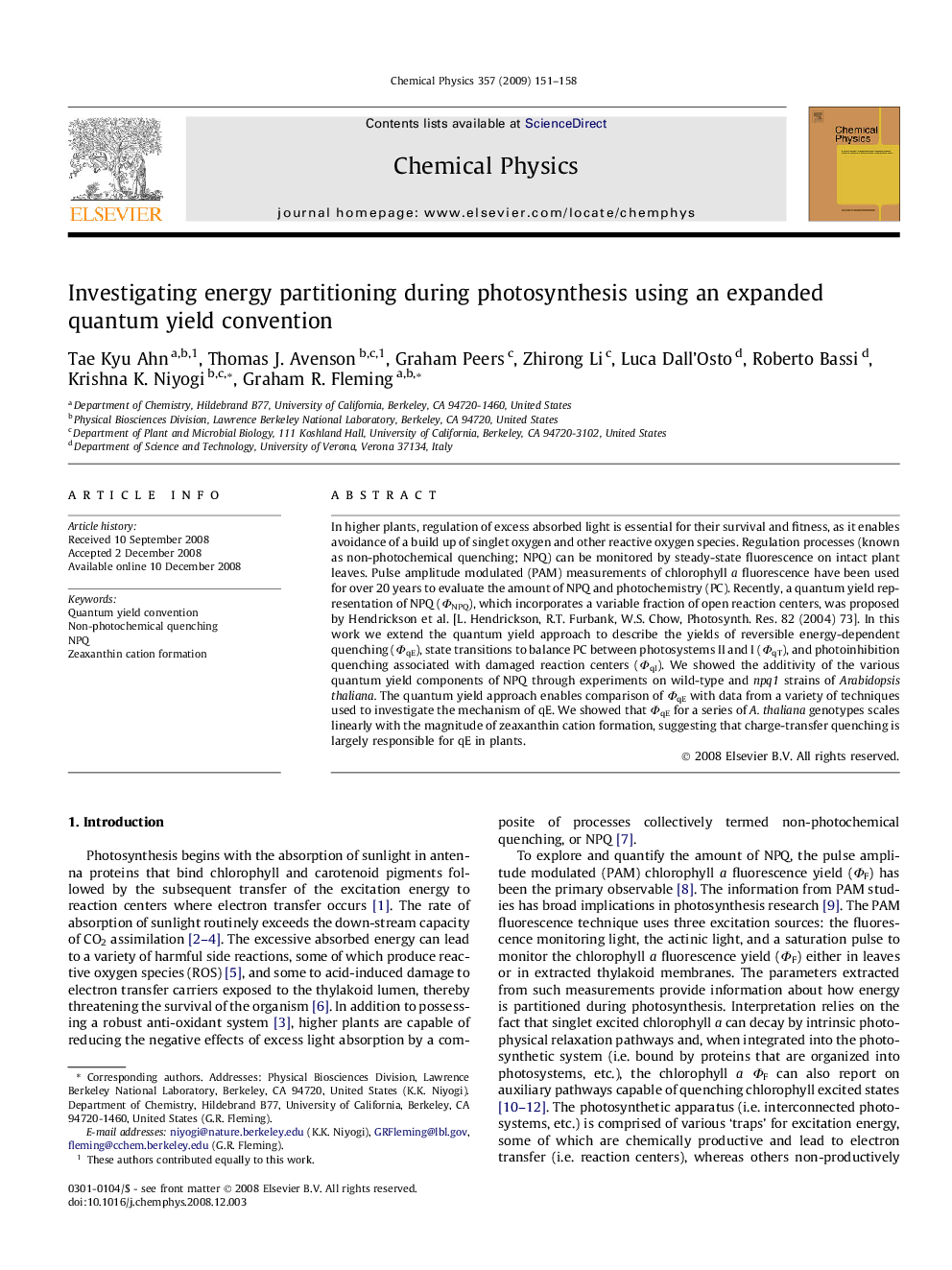| Article ID | Journal | Published Year | Pages | File Type |
|---|---|---|---|---|
| 5375676 | Chemical Physics | 2009 | 8 Pages |
Abstract
In higher plants, regulation of excess absorbed light is essential for their survival and fitness, as it enables avoidance of a build up of singlet oxygen and other reactive oxygen species. Regulation processes (known as non-photochemical quenching; NPQ) can be monitored by steady-state fluorescence on intact plant leaves. Pulse amplitude modulated (PAM) measurements of chlorophyll a fluorescence have been used for over 20 years to evaluate the amount of NPQ and photochemistry (PC). Recently, a quantum yield representation of NPQ (ΦNPQ), which incorporates a variable fraction of open reaction centers, was proposed by Hendrickson et al. [L. Hendrickson, R.T. Furbank, W.S. Chow, Photosynth. Res. 82 (2004) 73]. In this work we extend the quantum yield approach to describe the yields of reversible energy-dependent quenching (ΦqE), state transitions to balance PC between photosystems II and I (ΦqT), and photoinhibition quenching associated with damaged reaction centers (ΦqI). We showed the additivity of the various quantum yield components of NPQ through experiments on wild-type and npq1 strains of Arabidopsis thaliana. The quantum yield approach enables comparison of ΦqE with data from a variety of techniques used to investigate the mechanism of qE. We showed that ΦqE for a series of A. thaliana genotypes scales linearly with the magnitude of zeaxanthin cation formation, suggesting that charge-transfer quenching is largely responsible for qE in plants.
Keywords
Related Topics
Physical Sciences and Engineering
Chemistry
Physical and Theoretical Chemistry
Authors
Tae Kyu Ahn, Thomas J. Avenson, Graham Peers, Zhirong Li, Luca Dall'Osto, Roberto Bassi, Krishna K. Niyogi, Graham R. Fleming,
